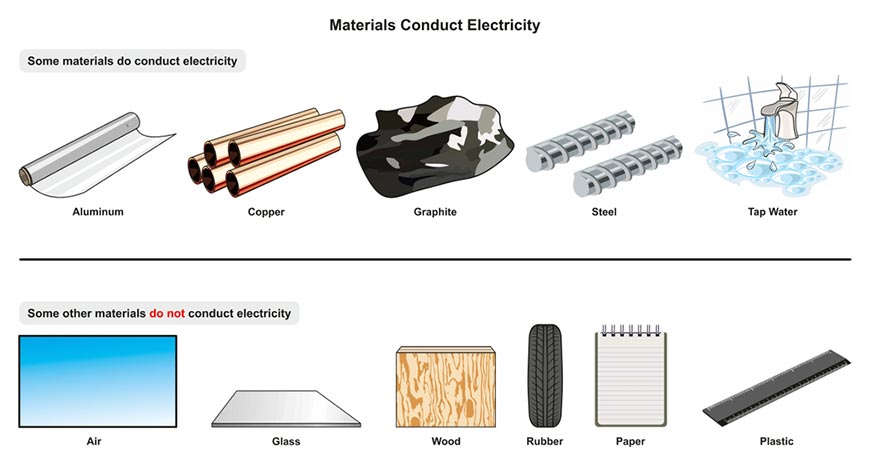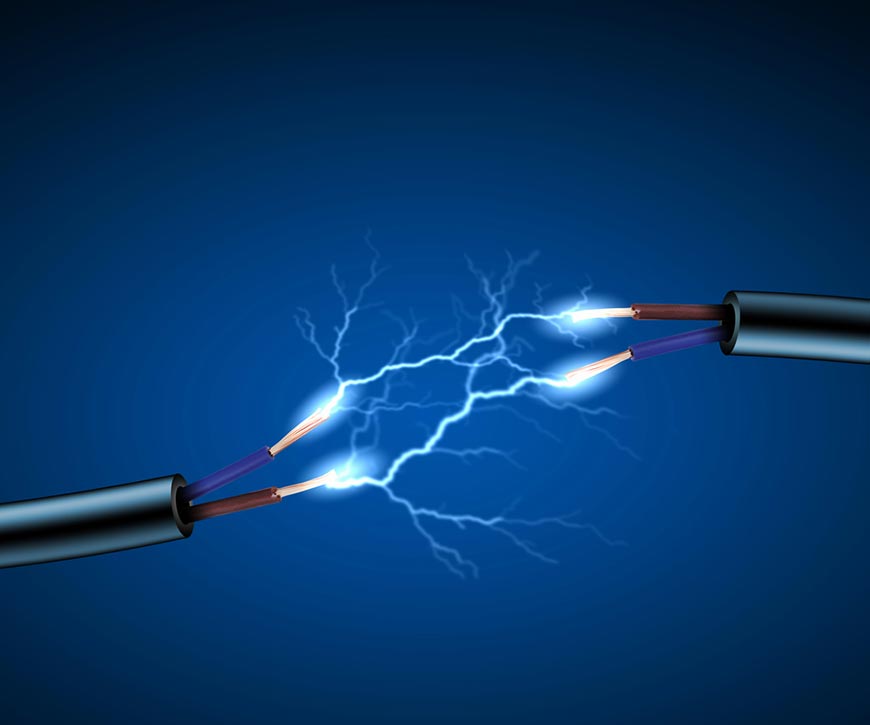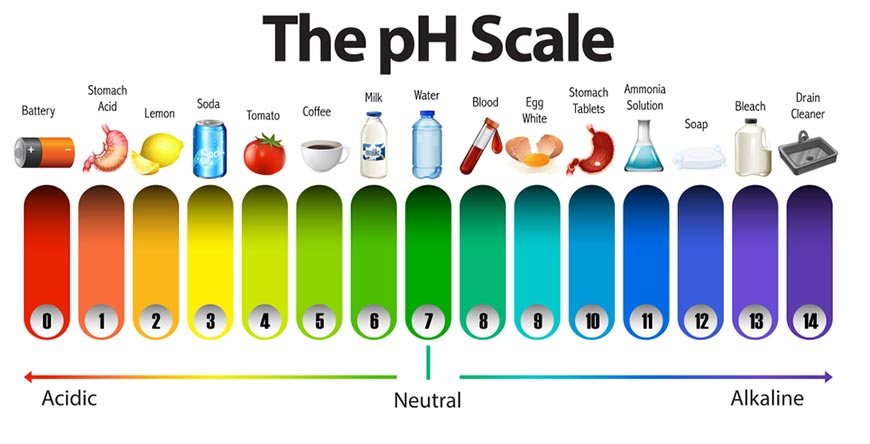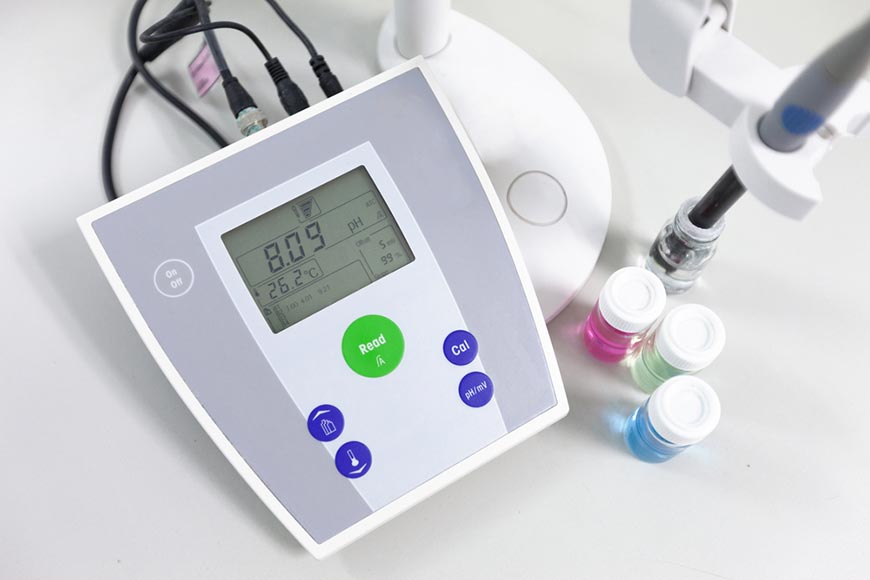
Instructions for calibrating a pH meter effectively and properly
A pH meter is a fairly common instrument in laboratories. However, calibrate the pH meter not everyone knows the process and how to do it. In this article, Hiep Phat will teach you how to properly calibrate your pH meter, making your calibration process easier and more efficient.
What is pH meter calibration?

Calibrating a pH meter is the performance of a deterministic operation, establish the relationship between the measuring standard and the measuring device to evaluate the error and the specifications, measure the standard of this pH meter by measuring the standard solutions of different values, then adjust pH meter to display a standard value that matches a previously known value.
How to calibrate a pH meter
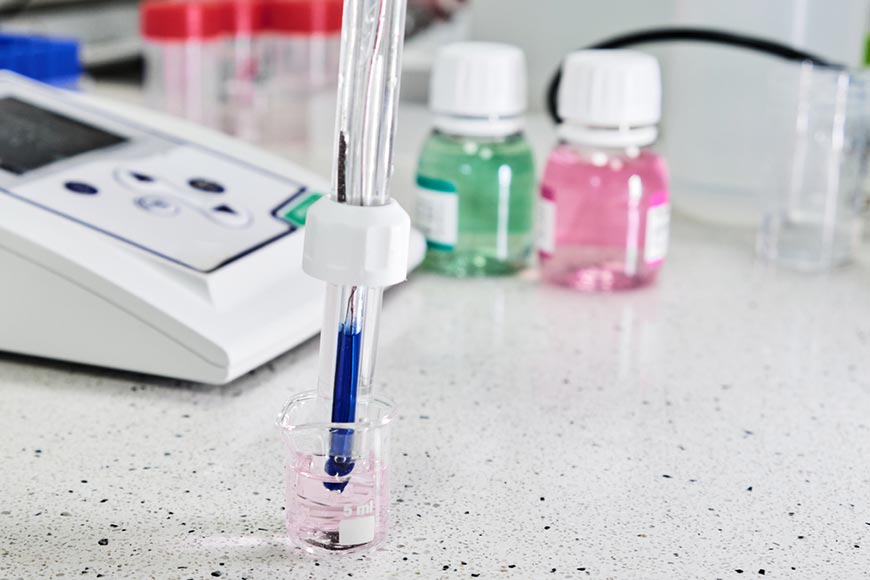
There are two common ways of calibrating pH meters:
Two point calibration
In this method, a microprocessor based pH meter calculates the true slope and offset error for the pH electrode. Based on this information, the meter’s mV/pH equation is adjusted to match the characteristics of the pH electrode used. Two calibration points set the range of values to be measured, so this method is also known as frame calibration. Readings that go through the correction range may be displayed with slight deviations from the true value, as they are extrapolated by a hypothetical linear pH meter.
Multi-point calibration
For some pH meters, calibration can be performed for more than two pH values on both sides of the zero point, in this case is pH 7.00. This calibration will increase the measuring range of the instrument without recalibration.
Why calibrate a pH meter?

Change electrode features and characteristics for more accurate use
After a period of use, aging and coating of the pH electrode may change the characteristics of the instrument. The performance of the calibration helps to match the current characteristics of the pH meter with the pH sensor in use despite the discrepancy between the actual and the theoretical electrodes.
For more accuracy
It is recommended to use standard buffers to perform calibration, if calibration is not done correctly the measurement result may not be correct.
Predict device failure
Helps detect failures or predict failures to plan for timely pH meter repair.
Sample difference
Multiple samples of the same substance can have different properties and calibration against normalized buffers prevents problems associated with related to cell gills such as differences in ionic strength.
Other benefits
Calibrated to ensure compliance with industry, national, and international quality standards.
Basic pH meter calibration procedure
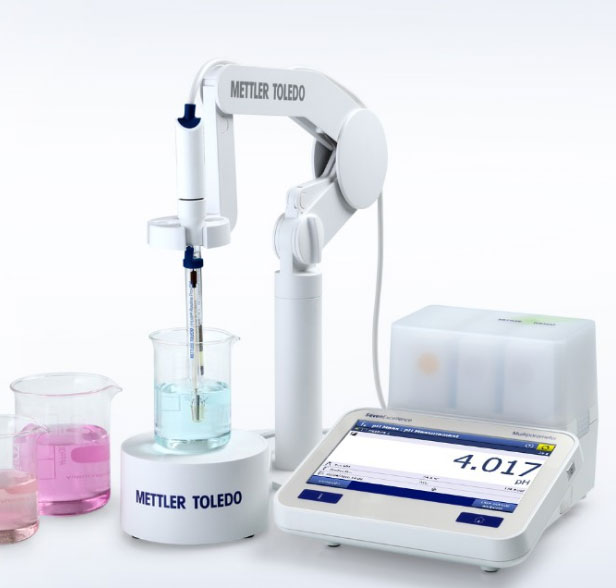
The following steps are required to perform pH meter calibration
Step 1: Prepare
As a standard, it is necessary to calibrate all “full range” measurement ranges for accuracy and sample measurement at any pH value. any. Typically, a 3-point calibration will be used as pH at 4.01/7.01/10.01 values. However, it is possible to save time by determining the pH range of the sample to be measured, we will calibrate pH values near the value of the sample.
Most of today’s desktop pH meters have pre-installed “Buffer” standards according to USA , NIST or Custom so that they can be used. option. It is necessary to determine the match between the pH value of the existing standard solution bottles with the pH value you have selected Buffer
Clean the electrode with distilled water, avoid strong impact because there is a sensitive film around the electrode, then dry gently with paper soft after measuring the sample/standard or before measuring the sample/standard
Before starting calibration, make sure the sensor and buffer are at the same temperature. If not, allow time to equilibrate.
Step 2: Calibrate the pH meter with a suitable standard solution
General calibration procedure:
Turn on the machine (ON/OFF key)
Rinse electrode with distilled water, dry
Immerse the pH meter electrode tip in the prepared standard solution, usually pH = 7.01. The meter will automatically receive the calibration value and move to the next standard
Remove electrode and wash with clean water, dry. Continuing the calibration with the next standard solution, the above procedure is repeated. Depending on the model, up to 2, 3 or 5 points can be calibrated.
End calibration in 2 ways: auto save (depending on model) or press save/enter/Cal key to save. Some modern models can review the calibration value and Slope/Ofset value.
Hopefully the above article has helped you clearly understand how calibrate your pH meter properly as well as why regular calibration of this instrument is necessary. If during use, you have any questions about calibration of the pH meter, do not hesitate to contact Hiep Phat via Hotline: (028) 6287 4765 or Email: sales@thietbihiepphat.com to receive advice timely.

Leave your questions, we will answer them right away



 EN
EN VN
VN





